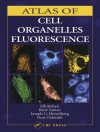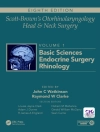Since this book is geared to be used by varied groups of readers such as advanced students and instructors in the fields of biology and medicine, scientists and more importantly clinicians, it is considered important to provide brief accounts of the basics of DNA damage, repair, mutagenesis and cancer. The purpose of this book is to present an updated detailed account of some important additional diseases of DNA repair. It has not been possible to cover all the DNA repair deficient diseases in this volume, hence diseases such as Bloom’s syndrome, Werner’s syndrome, Nijmegen breakage syndrome, ataxia telangiectasia‑like disorder, RA D 50 deficiency, RIDDLE syndrome and others will be presented in a forthcoming volume.
विषयसूची
Triple-A Syndrome.- Amyotrophic Lateral Sclerosis.- Early-Onset Ataxia with Ocular Motor Apraxia and Hypoalbuminemia/Ataxia with Oculomotor Apraxia.- Clinical Features and Pathogenesis of Alzheimer’s Disease: Involvement of Mitochondria and Mitochondrial DNA.- Huntington’s Disease.- Clinical Features and Molecular Mechanisms of Spinal and Bulbar Muscular Atrophy (SBMA).- Spinocerebellar Ataxia with Axonal Neuropathy.- Tuberous Sclerosis Complex and DNA Repair.- Hereditary Photodermatoses.- Trichothiodystrophy: Photosensitive, TTD-P, TTD, Tay Syndrome.- Cornelia de Lange Syndrome.- Rectal Cancer and Importance of Chemoradiation in the Treatment.- Familial Cutaneous Melanoma.- Primary Immunodeficiency Syndromes.- Inherited Defects of Immunoglobulin Class Switch Recombination.- Ligase IV Syndrome.- Muir-Torre Syndrome.- Wilms’ Tumor.- Cerebro-Oculo-Facio-Skeletal Syndrome.- Dyskeratosis Congenita.- Retinoblastoma.- Von Hippel Lindau Syndrome.
लेखक के बारे में
Shamim Ahmad after obtaining his Master’s degree in Botany from Patna University, Bihar, India and his Ph D in Molecular Genetics from Leicester University, England, joined Nottingham Polytechnic as Grade 1 lecturer and subsequently promoted to SL post. Nottingham Polytechnic subsequently became Nottingham Trent University where, after serving for about 35 years, he took early retirement to spend the remaining time writing books and conducting full‑time research. For more than three decades he worked on different areas of biology including thymineless death in bacteria, genetic control of nucleotide catabolism, development of anti‑AIDS drugs, control of microbial infection of burns, phages of thermophilic bacteria and microbial flora of Chernobyl after nuclear accident. But his primary interest, which started 25 years ago, is DNA damage and repair, particularly near UV photolysis of biological compounds, production of reactive oxygen species and their implications on human health including skin cancer and xeroderma pigmentosum. He is also investigating photolysis of non‑biological compounds such as 8‑methoxypsoralen+UVA, mitomycin C, and nitrogen mustard and their importance in psoriasis treatment and in Fanconi anemia. In 2003 he received a prestigious “Asian Jewel Award” in Britain for “Excellence in Education”. He is also the Editor of Molecular Mechanisms of Fanconi Anaemia, Molecular Mechanisms of Xeroderma Pigmentosum, Molecular Mechanisms of Ataxia Telangiectasia and Molecular Mechanisms of Cockayne Syndrome published by Landes Bioscience.












